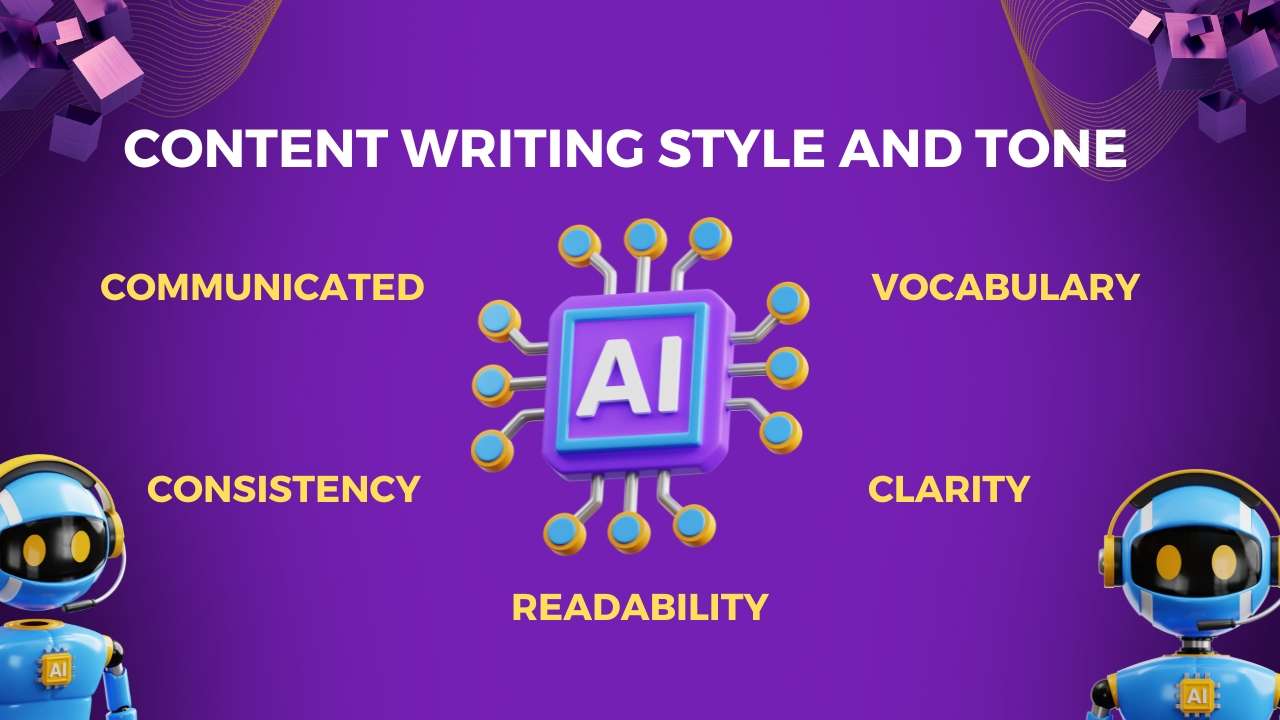Top 10 AI Content Writing Tools To Increase Your Content Creativity In 2024

AI content writing tools have demonstrated a remarkable capacity to enhance content creativity. I’m someone who passionately displays words to craft stories and share insights. I’ve had my have a lot of battles with writer’s block.
Then I found a great solution: AI writing tools. By using advanced algorithms and vast databases of information, these tools can generate innovative and engaging content across various topics and styles. They offer a valuable resource for writers, providing inspiration, generating ideas, and even suggesting alternative approaches to familiar subjects.
This infusion of creativity can significantly elevate the quality and appeal of written material, ultimately leading to more engaging and impactful content. Let’s explore together how these tools changed how I write. They’ve made writing more accessible and helped me connect better with you, the readers.
Table of Contents
1. How Do AI Writing Tools Work?
1. Learning from Texts:
AI writing tools are equipped with a substantial amount of data from a wide range of written sources, including books, articles, and websites. Through this extensive exposure to text, the tools learn the fundamental principles of language, such as how sentences are structured, how words are used in different contexts, and how grammar rules apply. This knowledge is important for the tool to generate reasonable and contextually appropriate text when given a specific prompt or instruction. Essentially, the tool uses its training to understand and replicate the way humans use language.
2. Pattern Recognition:
AI writing tools shine at identifying regularities and structures within language. They can hold how sentences are formed, recognizing the roles of subjects, verbs, objects, and so on. Moreover, these tools have a genius for understanding how different words work together to convey meaning. They’re even capable of refined subtleties like the emotional tone of a piece or the specific style of writing being used, whether it’s formal, casual, technical, or creative. Essentially, they’ve been trained to interpret and replicate various aspects of human language use. This enables them to generate text that aligns with the patterns and styles they’ve learned from their training data.
3. Predicting the Next Word:
When you provide an AI writing tool with a starting sentence or phrase (which is called a prompt), the tool uses its extensive training to predict and suggest the words or characters that are most likely to come next. It does this by recognizing patterns in the language it has learned from its training data. Essentially, the tool is trying to generate text that fits logically and is understandable with the context provided in the prompt. This process is at the core of how AI writing tools assist in generating written content.
4. Fine-tuning (Optional):
After the initial training on a broad dataset of text, some AI models undergo a specialized training process on more specific and targeted information. For instance, a model could be further trained in a specific field, like medical literature, to make it particularly proficient at generating content related to medicine. This fine-tuning process refines the model’s abilities in that specific domain, allowing it to produce more accurate and contextually appropriate text within that field of expertise. Moreover, it’s a way to customize the AI’s capabilities for particular applications or industries.
5. Generating Text: AI content writing Tool
After receiving a prompt, the AI writing tool uses its training to produce text that aligns with the information or instruction given in that prompt. The generated text can vary in length, from just a brief sentence to a more extensive paragraph. The specific length of the generated text depends on the capabilities and settings of the particular AI tool being used, as well as the complexity of the prompt provided. Essentially, the tool’s output is tailored to match the context and scope of the input it receives.
It’s important to remember that while AI models can produce impressive text, they don’t truly understand like humans do. Their output is based on patterns learned from data, without genuine comprehension.
If you ever have questions or need help using an AI writing tool, feel free to ask! I’m here to assist you.
2. Future Of Content Creative Writing:
We’re living in an era where technology has woven itself into the very fabric of our existence. From smart homes to self-driving cars, innovation knows no bounds. So, it’s no surprise that the world of writing is undergoing its transformation, thanks to Artificial Intelligence.
AI writing tools are the new wings empowering writers with efficiency, creativity, and an extra dose of inspiration.
Here Are The Top 10 AI Content Tools That You Must Try In 2024:
1. Inflact AI:
Inflact AI is a transformative tool that empowers digital creators and marketers to conquer the social media landscape. With its data-driven approach and user-friendly interface, Inflact AI is a game-changer, enabling users to achieve remarkable growth and maximize their impact in the dynamic realm of social media.
2. DALL-E-2:
DALL-E-2 is a groundbreaking AI tool developed by OpenAI, building upon the success of its predecessor, DALL-E. This advanced model takes creativity to new heights by generating images from textual descriptions, effectively turning words into visual art.
3. Synthesia:
Synthesia is a revolutionary AI-powered platform that transforms the way video content is created. Using advanced technology, Synthesia enables the generation of hyper-realistic videos where a virtual host delivers scripted content in multiple languages and styles.
4. Copy.ai:
Copy.ai is a well-known writing tool powered by artificial intelligence. It aids users in efficiently creating top-notch content. It can assist with various tasks like composing blog posts, crafting marketing materials, generating product descriptions, and more. Copy.ai has become widely favoured for its capacity to streamline the writing process, ultimately leading to time-saving and increased productivity across a range of writing-related tasks.
5. Asana:
Asana, a leading project management platform, employs AI to streamline collaboration and productivity. Asana’s AI assists teams in managing projects more efficiently. It analyzes task data to predict potential bottlenecks and optimize project timelines.
6. Bio link:
A bio link AI tool is a dynamic platform that optimizes the use of a single link on social media profiles to showcase multiple links or destinations. It offers personalization and customization options, allowing users to create a visually appealing landing page with links to various content, such as websites, social profiles, articles, and more.
7. Timely AI:
Timely is a cutting-edge AI tool designed to revolutionize time management and scheduling. Timely analysis of work patterns, project data, and individual preferences to automate and optimize the scheduling process.
8. Chatbot Live:
A live chatbot AI tool is a real-time communication solution that integrates artificial intelligence to enhance customer interactions. This tool engages users in conversations, providing instant support and information.
9. ChatGPT: Recommended AI content writing tool
ChatGPT is a transformative AI tool developed by OpenAI, designed to engage in dynamic and natural conversations. It employs advanced language models to generate human-like responses, making it a versatile virtual conversational partner.
10. Quillbot:
QuillBot is an AI-powered paraphrasing tool designed to help users rephrase and reword sentences or paragraphs. It’s useful for tasks like content rewriting, paraphrasing, and improving the clarity and flow of written text. QuillBot utilizes natural language processing (NLP) techniques to understand and generate human-like text.
3. Content Writing Style and Tone:

Think about how good writers always have a unique style that shows in their work. Well, AI tools can do that too, surprisingly. They look at how you write and help make it better – like making it sound friendly, super smart, or just right for your story.
It’s like having a writing coach who makes your work better but still keeps your special way of writing. It’s like adding bright colours to your words and making people feel a strong connection to what you say:
- The content writing style is influenced by the intended audience and purpose, with consideration given to factors such as formality and readability.
- The tone is carefully chosen to convey the desired message, with attention paid to emotions and attitudes that are to be communicated.
- Clarity in communication is strived for, ensuring that the content is easily understood by the reader without ambiguity.
- Consistency in style and tone is maintained throughout the piece, creating a cohesive and unified reading experience.
- The choice of vocabulary and sentence structure is guided by the overall style and tone, aiming to resonate with the target audience.
Different models might have different capabilities, so choosing the right tool for the task is important.
To Know The Right Tool Join Our Online Content Mastery Course
Conclusion
In 2024, there has been a significant increase in content creativity, largely thanks to the use of the top 10 AI content writing tools. Writers and content creators have effectively used these tools to enhance their creative abilities. The smooth incorporation of these advanced technologies has clearly shown their potential to boost content creativity. As a result, there has been a noticeable change in how content is generated, marked by a higher level of creativity. The long-lasting influence of these AI-powered tools on content creation is expected to continue shaping the digital communication landscape in the years ahead. In essence, AI tools have played a crucial role in enhancing content creativity in 2024 and are anticipated to continue doing so in the future.
FAQs
1. What are AI content writing tools?
AI content writing tools are computer programs driven by artificial intelligence. Their purpose is to aid in the creation of written content. These tools achieve this by using sophisticated algorithms that enable them to comprehend and mimic the patterns present in human language. This assistance ultimately allows users to generate content in a more efficient and streamlined manner.
2. How can AI content writing tools enhance content creativity?
AI content writing tools can boost content creativity in several ways. They can serve as a wellspring of inspiration, offering fresh ideas and alternative perspectives for writing. Additionally, these tools can be beneficial in overcoming periods of writer’s block, providing prompts or suggestions to jumpstart the creative process. Moreover, they can offer guidance on stylistic elements, aiding in refining and enhancing the overall writing style.
3. Can these tools be used for specific industries or niches?
Several AI content writing tools can be customized or adapted to cater to specific industries or specialized fields. For instance, a tool can undergo additional training in a specific domain, like medical literature. This focused training enables the tool to generate medicine-related content with greater accuracy and relevance. Essentially, it allows the AI tool to excel in producing content that is tailored to the specific needs and requirements of a particular industry or niche.
4. How can I choose the right AI content writing tool for my needs?
When choosing an AI content writing tool, it’s important to consider various factors. These factors include the features offered by the tool, its pricing structure, feedback from other users, and its specific capabilities. Additionally, it’s beneficial to test out a few different tools to determine which one best suits your writing style and fulfills your content creation needs. By considering all of these elements, you can make a more informed decision about which AI writing tool is the most suitable for you.
5. What kind of content can be generated using these tools?
AI content writing tools can create various types of written content across different platforms. They can generate content such as blog posts, articles, social media updates, marketing materials, product descriptions, emails, and more. Essentially, these tools are versatile and can be used to assist in producing a diverse array of written materials for different purposes and audiences.